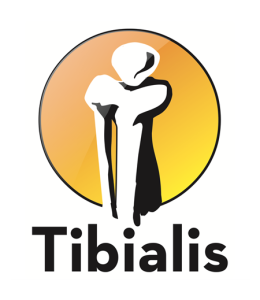Are Meridians Real?
After my very first week of massage school in April of 2003, it was obvious which half of the class was training for energy work and which was studying the science of anatomy for sports massage – I was in this second group. When the teacher announced that we would be spending eight hours on Saturday rolling around on the floor to connect to the universe, half of the class squealed with glee; I groaned.
I was pretty determined that an in-depth study of anatomy would guide my practice. I used some basic coding skills (learned during my former career at Apple) to build a relational database of muscles. The goal all along has been to add intelligence to what is mere rote memorization of facts – one muscle at a time. The body is 3D; the flat file lists of muscle data do not reflect that.
And then there was that great, esoteric, unknown energy current to which I was exposed to in my ungrounded body. This was over a decade ago, when a new client was on the table. I touched her ribs. Every ounce of negative energy in her body transferred directly to me, and it felt like I had food poisoning. At the end of the session, she felt great! I did not. So on a whim I went to an energy guy near the office. He cleared the bad vibes and suggested that I learn how to manage energy if I wanted to continue with my chosen career.
I took his beginner Qigong class – tai chi on steroids – three times. The teacher presented hoards of data of what he believed to be scientific, empirical evidence of how the body works in 3D. One such concept is that the meridians govern energy that flows throughout the body.
What Are Meridians?
Traditional Chinese medicine stems from thousands of years of empirical data about properties of energy. There are 12 main energy meridian lines in the body, all named after their related organs. One function of meridians is to act as a guide for an acupuncturist who is applying needles to specific points in the body. Energy blockages within or between meridians can cause disruptions to the functions of one or many interrelated organs.
The ancient mapping (pre-Excel charts) is essentially data visualization, or data points plotted on lines, showing which areas are proven to have the greatest impact on healing. Place a needle here, and the liver gets better.
Originally, these secret energy teachings were used in martial arts to train and maintain warriors. The meridian pathways to superpowers in martial arts act as a guide to understanding how nerves and muscles work together to create action.
For example, something called the governing vessel – a controlling aspect of the meridian network – runs down the center of the back, from the base of the skull to the tip of the tailbone. That is the spinal cord, which is made up of motor neurons that start as brain signals to tell muscles to move. Meridians are governed by nerve pathways to muscles and organs, and information is transferred in and out of the spinal column to the various nervous systems that run throughout the body.
How many nervous systems are there?
Nervous System Overview
central nervous system (CNS): made up of the brain and spinal cord
peripheral nervous system (PNS): outside the CNS
autonomic nervous system (ANS): part of the PNS, mostly involved in unconscious control of smooth muscle of organs and glands such as heartbeat, digestion
In PNS, sympathetic nervous system: fight-or-flight excited yang energy paired 1:1 with spinal segments just outside CNS under the transverse process of the vertebra.
In PNS, parasympathetic nervous system: calming vagus nerve yin energy, directly enters PNS from base of skull as cranial nerve X.
Urinary Bladder Meridian for Stress Management
One very important nerve pathway is the urinary bladder meridian, which has two lines that run parallel to the spinal column with one on each side. The line closest to the spine represents the sympathetic nervous system of yang energy, and the outer line maps to the yin energy of the parasympathetic nervous system. Together, the lines balance the stress energy of organs in the autonomic nervous system.
The line of the bladder meridian closest to the spine can be mapped directly to the sympathetic nervous system’s chain of ganglia. Motor neurons exit the CNS at spinal segments to provide resources to a specific group of muscle and organ movements. The sympathetic nervous system outside the spine can override standard organ muscle movement signals and reassign energy in the event of a stress override emergency. Pressure points along this line of the bladder meridian can rally yang stress power, such as an increase in blood pressure and heart rate.
The second line of the bladder meridian represents the yin parasympathetic nervous system. This line is just outside and parallel to the sympathetic chain along the spine. The ganglion points on this line are locations where the vagus nerve intercepts a subset of hijacked motor neurons trying to send stress messages from the fight or flight line to an organ group that can increase power for enhanced movement. The vagus nerve enters directly into the PNS from the base of the skull and can intercept those stress signals at specific points to calm things down after the threat is over or even before, if the threat is deemed not such a big deal. Pressing points along this line will encourage the vagus nerve to decrease overall anxiety or stress on specific organs.
Sensory information reporting back from the PNS can initiate sympathetic and parasympathetic stress regulation responses to organs. Understanding the yin and yang counterbalancing effects of the CNS of motor neurons (efferent) and the PNS sensory neurons (afferent) can be very powerful in managing the physical reactions to the stress signals from the autonomic nervous system.
Yin and Yang of the Central Nervous System Meridians
CNS to PNS: Axon lines of motor neurons travel away from the spine (efferent) to PNS to transmit movement impulses to muscles, glands, and organs through yin meridians, such as the heart and lung lines.
PNS to CNS: Sensory neurons transmit information from muscles, skin, or the universe to the spine (afferent) through yang meridians, such as the small and large intestine lines. Only skeletal muscle is directly paired with a CNS sensory neuron from the spinal cord, whereas smooth muscle exits the CNS to be controlled later, mostly in the autonomic nervous system.
Each motor nerve pathway that’s supporting skeletal muscle has a predetermined task of asking a group of muscles to perform an action. The main nerve pathway is a bundle of nerves that exit from a group of the spinal segments and roughly travel together on the same local and express train lines outlined by the data visualization project of Chinese medicine – meridians.
Acupressure points along the lines of the 12 meridians are local train stops where nerves disembark to get to work innervating muscles. The branches of the exiting nerve lines are considered terminal once they reach the specific group of target muscles that work together as a team to perform an action. For example, the large sciatic nerve line that supports the hamstrings in the back of the thigh get off the train much earlier than the longer portions of the sciatic nerve terminating at the lower leg and feet. The nerve lines for muscles in the feet have a long way to go before they reach their destination. The meridians are data points mapped along the “express train” nerve lines, which end at the hands and feet.
In anatomy, nerves have a specific neurological function to support a muscle. In contrast, the pathways of nerves relate more to nerve signals traveling along power lines to get to work. Individual motor nerves travel in bundles and connect loosely to muscles that are headed roughly in the same direction. Injury or repetitive overuse to muscles or fascia can interrupt the logistical pathway of a nerve that is trying to perform its neurological function. Tracking meridians can guide the search to find those disruptions.
Six yin meridians follow motor neuron movement signals from the CNS to the PNS. The paired sensory neurons in skeletal muscle and skin send information back to the spine via the six yang meridians, and that to-and-fro dialogue is monitored by the stress system. These are real energy lines. The transformation of energy around muscle cells from yin to yang peaks with a balanced homeostasis – for just a moment – and then a subtle wave of change breathes movement and life back into the body.
An organ’s stress response is considered mainly autonomic, but there are yin and yang intercepts of the energy being hoarded for an emergency that can be rerouted to muscular activity, such as walking, to decrease anxiety.
Neuropathy in the feet may be caused by a bulging disc of the spine, but any data point within a meridian, or main nerve line to the feet, can also be a suspect in the neuropathy. Injury or stress can exacerbate the ability of any nerve line to reach its destination. Using data to isolate which muscles are impacted and to determine their nerve source and meridian line can narrow down the list of possible culprits that need to be addressed.
Acknowledging that thousands of years of empirical data can build data visualization models of 12 meridians can give tremendous insight into how the 3D body works, how it can fail, and how we can heal.
Yes, meridians are real.

